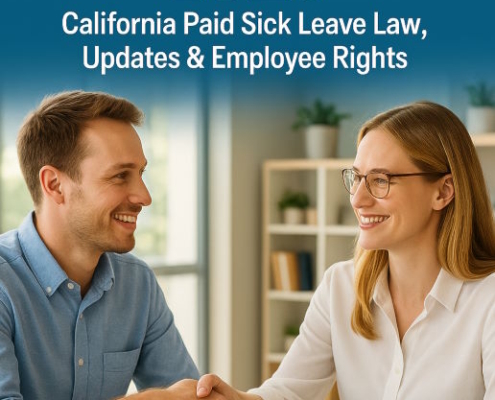The Taxability of Tips: A Historical Overview
The original income tax statute of 1913 included “compensation for personal service of whatever kind and in whatever form paid,” which certainly seemed expansive enough to encompass tips. The practice of tipping began in Tudor England. In medieval times, tipping was a master-serf custom wherein a servant would receive extra money for having performed superbly well.
Treasury declared in a 1919 regulation that “commissions paid salesmen, compensation for services on the basis of profits, commissions on insurance premiums, tips, retired pay of federal and other officers, and pensions or retiring allowances paid by the United States or private persons, are income to the recipients.” The legal recognition of tips as taxable income played a significant role in solidifying their tax treatment. In the United States, the Internal Revenue Service (IRS) established in 1963 that tips received by service employees were to be treated as taxable income, akin to wages and salaries.
Legal Developments and Codification
The issue of taxation on tip income became a matter of concern for governments. In the United States, the Internal Revenue Service (IRS) first addressed the taxation of tips in 1963. The IRS established that tips received by service employees were considered taxable income, just like wages and salaries. By including tips in the definition of wages for tax purposes, it acknowledges that tips should be treated no differently from regular wages and salaries.
The legal affirmation of the taxable status of tips came through several pivotal cases. In Roberts v. Commissioner, a 1948 Tax Court case, the court ruled that tips were taxable income rather than tax-exempt gifts. Only in 1948 did the statutory interpretation question finally receive judicial attention. Harry Roberts, a Los Angeles taxicab driver who had received a notice of deficiency based on unreported tip income, argued in Tax Court that tips were tax-free gifts rather than taxable compensation for services and that the contrary regulation was invalid.
The Supreme Court reinforced this view in the 1960 Duberstein opinion, describing tips as “classic examples” of taxable “payment . . . in return for services rendered.” Judicial confirmation of the taxability of tips was further solidified in later rulings.
The 1982 TEFRA Act and Enforcement Challenges
As part of the 1982 Tax Equity and Fiscal Responsibility Act, large restaurants were required to report taxable tips for their employees, regardless of whether those tips had actually been received by servers. According to the IRS, estimates showed that employees reported less than 20 percent of their tip income.
Many of the letter writers were incredulous, insisting that tips were actually tax-free gifts. As I recall, that was the prevailing sentiment at Allen’s Clam House, too. After decades of underenforcement by the IRS, waiters had come to believe that this view of tips was all but universal; tax-free tips were a right, they believed, even if lawmakers were claiming otherwise.
A fellow paid a $20 dinner check and tipped the waiter $1. The waiter spurned the tip, and loftily explained that it represented only 5 percent of the check; the minimum in that establishment is 10 percent (and even that isn’t considered any too much these days). “Very interesting,” murmured the customer, flashing his credentials as a representative of the Bureau of Internal Revenue.
Ongoing Controversies and Tipping Culture
The rationale behind taxing tips encompasses multiple factors. First and foremost, consistency in the tax treatment of income is essential. Treating all forms of income equally helps maintain fairness and prevents preferential treatment of certain types of earnings. One of the worst things about the tax-free tip proposals is how ineffective they would be at actually helping tipped workers. Many tips currently go unreported as income, and the lost revenue from an exemption is hard to estimate.
Taxing tips ensures consistency in the treatment of income. From a tax policy perspective, it is crucial to treat all forms of income equally to maintain fairness and prevent preferential treatment of certain types of earnings. Another crucial aspect of taxing tips is the prevention of tax evasion and underreporting of income. Tips, often paid in cash, provide individuals with an opportunity to underreport or completely evade taxes on their tip income.
Proposals to Change Taxation of Tips
Donald Trump, by his own account inspired by a chance conversation with a Las Vegas waitress, announced a new campaign pledge: “No taxes on tips.” In 2024, both major presidential candidates endorsed proposals to make tips tax-free, reflecting a shift in public and political attitudes toward tipping. Trump’s plan for an expansive and comprehensive exclusion, available to all workers, possibly extending to payroll as well as income taxes, has been compared to Kamala Harris’s approach. Harris seems to favor a more limited version of the idea, restricting the exclusion to workers in the service and hospitality industries and providing for both an income limit and a cap on the amount of the excludable income.
The Historical and Social Roots of Tipping
Historians trace tipping in the United States back to the post-Civil War era, when the practice gained traction as a way to provide gratuities to service workers. What started as an unethical loophole to the 13th amendment turned into a financial opportunity where restaurateurs benefited by subsidizing hourly pay with gratuities — and took off in becoming a standard practice across the U.S. and influencing the tipping culture that is alive and well today.
Conclusion
By explicitly taxing tips and implementing reporting requirements, tax authorities can minimize the opportunity for tax evasion and ensure that individuals accurately report their income. Today, the ongoing debate over the fairness and practicality of taxing tips underscores the need for continued dialogue on balancing equity, compliance, and economic realities.































